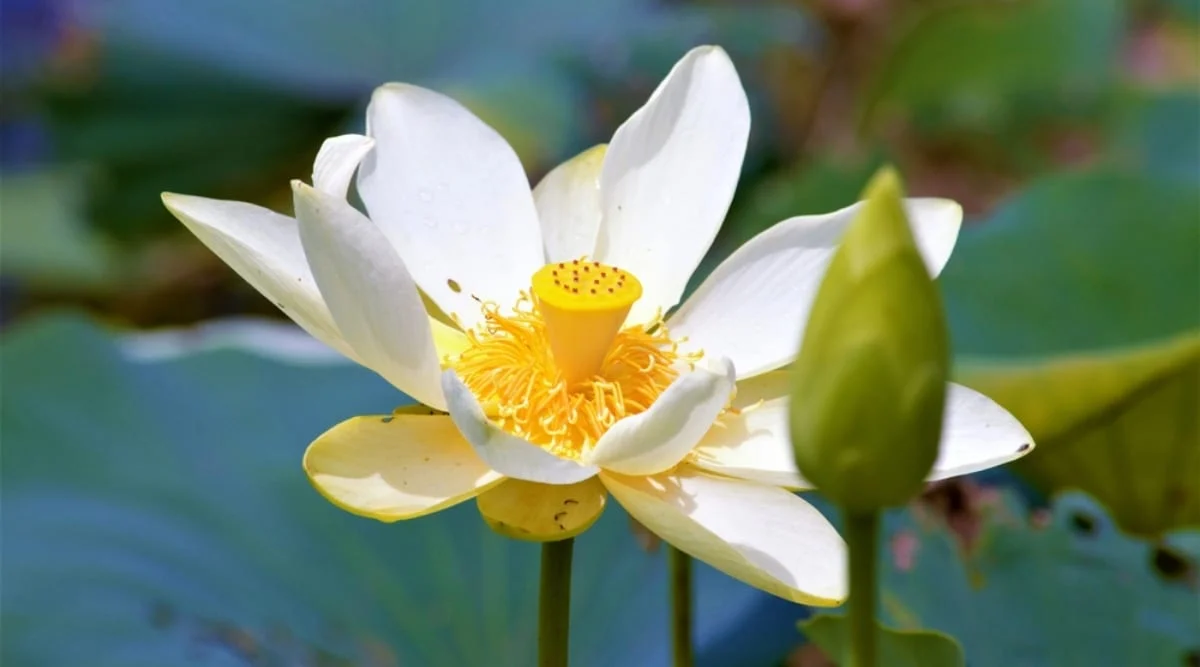
American Lotus: A Majestic Aquatic Bloom
mikephilipsforcongress.com – The American Lotus (Nelumbo lutea) is a stunning aquatic plant native to North America, known for its large, creamy-yellow flowers and striking, circular leaves. Often found in ponds, lakes, and slow-moving streams, the American lotus is a symbol of beauty and purity, flourishing in wetland habitats. This hardy, perennial plant not only serves as a beautiful addition to water gardens but also plays a crucial ecological role in supporting wildlife and maintaining aquatic ecosystems.
Key Features of the American Lotus
- Large, Showy Flowers: The most striking feature of the American lotus is its large, fragrant flowers, which can reach up to 12 inches in diameter. The blooms are pale yellow or creamy white, with multiple layers of petals surrounding a distinctive, flat-topped seed pod in the center. These flowers open in the morning and close in the evening, with each bloom lasting for several days during the summer.
- Circular Leaves: The American lotus is also known for its unique, circular leaves, which are often as large as 2 feet in diameter. These leaves are blue-green in color and are water-repellent, causing water droplets to bead and roll off. The leaves either float on the water’s surface or rise above it on long stalks, creating a visually striking effect.
- Aquatic Adaptation: The American lotus is a true aquatic plant, thriving in shallow water with its roots anchored in muddy or sandy soil at the bottom of ponds and lakes. The plant’s long stalks allow its leaves and flowers to float on or above the water, adapting well to wetland environments.
- Hardy Perennial: This species is a hardy perennial, meaning it will come back year after year in the right conditions. It is native to the southeastern United States but can be found in wetlands across the country, thriving in USDA zones 4-10. Despite its delicate appearance, the American lotus is a tough and resilient plant that can withstand a range of water conditions.
- Ecological Importance: The American lotus provides habitat and food for various species of wildlife. The large leaves offer shelter for fish, while its seeds and roots are consumed by birds, mammals, and other aquatic animals. Additionally, its dense growth helps stabilize wetland soils and reduce erosion.
Growing and Caring for American Lotus
- Water Depth and Location: The American lotus thrives in shallow, still waters, typically in ponds, lakes, or slow-moving rivers. Ideally, the water depth should be between 2-5 feet, allowing the plant’s roots to anchor in the muddy bottom while the leaves and flowers float on the surface.
- Sunlight: This plant requires full sunlight to thrive, as it needs at least 6 hours of direct sun each day to produce flowers. Planting it in a sunny spot in your pond or water garden will ensure the most vibrant blooms.
- Soil: The American lotus prefers muddy or sandy soil in shallow water. It’s essential to plant the tuber in soil that’s rich in organic matter, which helps provide the nutrients necessary for its vigorous growth.
- Planting: When planting the American lotus, bury the tuber in the soil at the bottom of your pond or in a large container submerged in water. Ensure that the growing tip is exposed, and place the container in a sunny spot where the water is shallow.
- Watering and Maintenance: The American lotus is relatively low maintenance once established. Ensure that the water levels remain consistent, and avoid drastic water level changes. Since the plant can spread rapidly, occasional thinning may be necessary to keep it from overtaking small ponds.
- Winter Care: In colder climates, the American lotus tubers can survive winter by going dormant. As long as the roots remain underwater and do not freeze, the plant will regrow in spring. If you live in a particularly cold region, consider growing the plant in a container that can be moved to a frost-free area for winter.
Uses of the American Lotus
- Water Gardens and Ponds: The American lotus is a popular choice for water gardens and ponds, where its large leaves and flowers create a dramatic, tropical-like display. It adds visual interest to ponds while also providing shade for fish and other aquatic life.
- Wildlife Habitat: In its native wetland habitats, the American lotus provides essential shelter and food for wildlife. The seeds, often referred to as “lotus nuts,” are consumed by birds, while the plant itself offers cover for fish and aquatic creatures.
- Cultural Significance: The American lotus has been used for centuries by Native American cultures for its edible seeds, tubers, and medicinal properties. The seeds can be eaten raw or roasted, while the tubers are starchy and can be cooked like potatoes.
- Erosion Control: In natural and man-made wetlands, the American lotus helps stabilize the soil, preventing erosion along the banks of lakes and ponds. Its extensive root system anchors the soil, reducing the risk of shoreline erosion and improving water quality.
Conservation and Ecological Impact
The American lotus plays a vital role in wetland ecosystems by improving water quality and providing habitats for wildlife. It is particularly valuable in conservation efforts aimed at protecting wetlands from erosion and habitat loss. However, due to its ability to spread rapidly, it can become invasive in some areas, particularly in shallow bodies of water. Careful management and occasional thinning are necessary to prevent it from overtaking smaller ponds or water features.
Conclusion
The American Lotus is a magnificent aquatic plant that combines beauty with ecological benefits. With its large, stunning blooms, unique floating leaves, and ability to thrive in shallow waters, it is a favorite for water gardens, ponds, and wetland restoration projects. Its resilience and low-maintenance nature make it an excellent addition to aquatic landscapes, while its ecological value supports biodiversity in natural wetland environments. Whether used as a decorative plant or for its environmental benefits, the American lotus is a true aquatic treasure.


